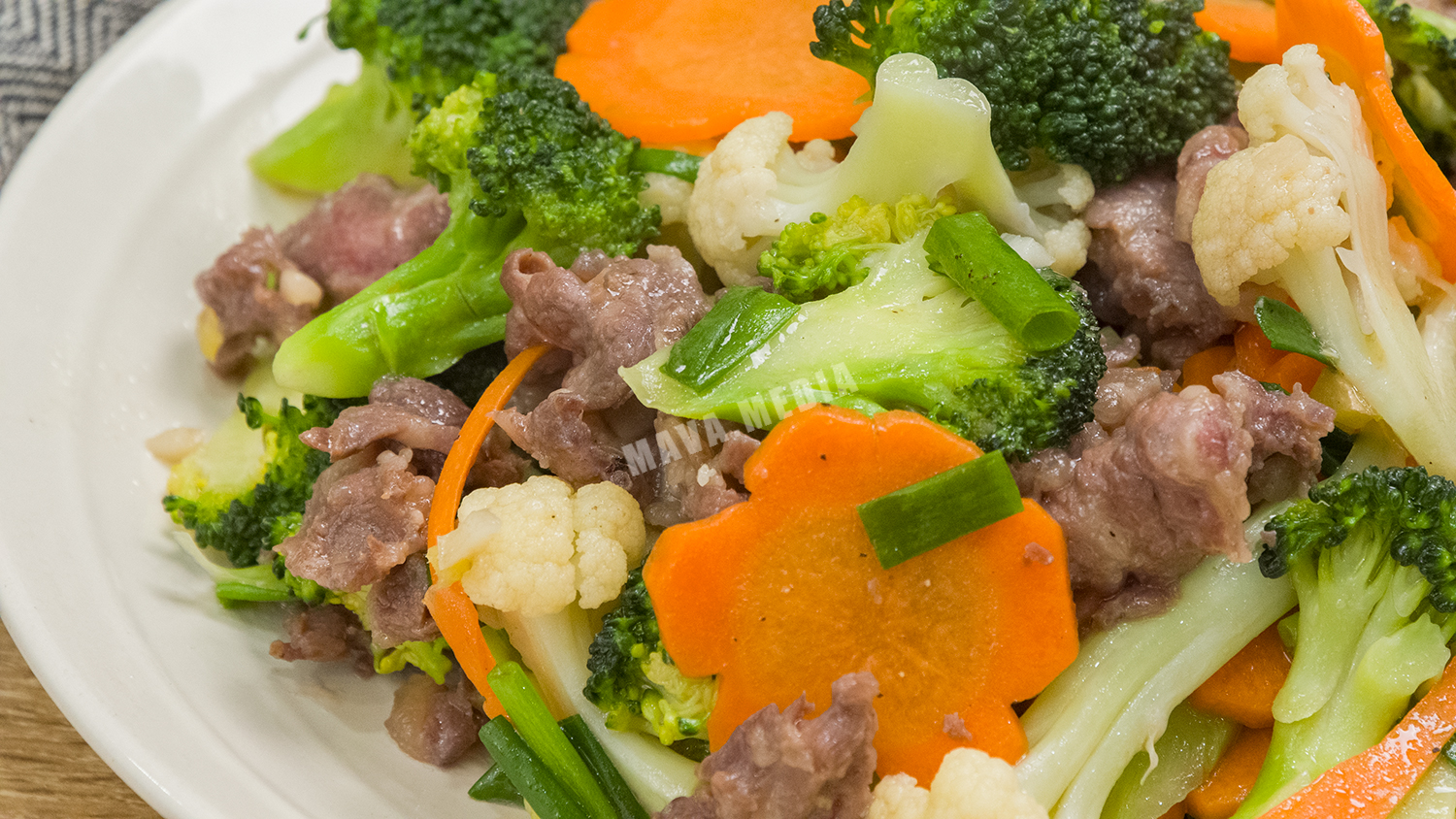Introduction
Stir-fried cauliflower soup is a delightful fusion dish that combines the heartiness of a soup with the vibrant flavors of stir-frying. Originating from a blend of Asian culinary techniques, this dish showcases cauliflower in a new light, offering a balance of savory umami notes and the comforting warmth of a soup. In this comprehensive guide, we explore the origins, ingredients, preparation methods, and variations of stir-fried cauliflower soup, highlighting its versatility and appeal in modern cuisine.

History and Culinary Influences
Origins and Evolution
Stir-fried cauliflower soup draws inspiration from both Chinese stir-frying techniques and Western soup-making traditions. Cauliflower, a versatile vegetable, lends itself well to stir-frying due to its ability to absorb flavors while retaining a pleasant crunch. The concept of transforming stir-fried ingredients into a soup reflects a creative approach to blending textures and tastes, making it a unique addition to both Asian-inspired and fusion menus.
Culinary Adaptations
Over time, stir-fried cauliflower soup has evolved to incorporate a variety of regional and personal touches. Chefs and home cooks alike experiment with different seasonings, vegetables, and garnishes to tailor the dish to their preferences. This adaptability has contributed to its popularity in both casual dining and gourmet settings, where it continues to captivate diners with its depth of flavors and satisfying texture.

Ingredients and Preparation
Essential Ingredients
To prepare a delicious stir-fried cauliflower soup, gather the following key ingredients:
– Cauliflower: Fresh cauliflower forms the base of the dish, providing a mild, slightly nutty flavor that complements the other ingredients.
– Vegetable Broth: This serves as the foundation of the soup, imparting a savory depth to the dish.
– Garlic and Ginger: These aromatics add aromatic complexity and depth of flavor to the soup.
– Soy Sauce: Provides umami richness and a touch of saltiness.
– Oyster Sauce: Adds depth and a hint of sweetness to the soup.
– Cornstarch Slurry: Helps thicken the soup slightly, giving it a silky texture.
– Scallions and Cilantro: Used for garnish, these fresh herbs add a burst of color and freshness.
Preparation Steps
1. Stir-Frying the Cauliflower: Start by stir-frying cauliflower florets in a hot pan with garlic and ginger until they are lightly browned and tender-crisp. This step allows the cauliflower to develop a caramelized flavor while retaining its crunch.
2. Creating the Soup Base: Transfer the stir-fried cauliflower to a pot and add vegetable broth, soy sauce, and oyster sauce. Bring the mixture to a boil, then reduce the heat and let it simmer gently.
3. Thickening the Soup: To thicken the soup slightly, prepare a cornstarch slurry by mixing cornstarch with water until smooth. Gradually add the slurry to the simmering soup, stirring constantly, until the desired consistency is reached.
4. Seasoning and Adjusting: Taste the soup and adjust the seasoning with more soy sauce or oyster sauce if needed. The flavors should be well-balanced with a savory umami base.
5. Garnishing and Serving: Ladle the stir-fried cauliflower soup into bowls and garnish with chopped scallions and cilantro. Serve hot, optionally with a drizzle of sesame oil for extra flavor.
Variations and Culinary Innovations
Regional Varieties
Stir-fried cauliflower soup lends itself well to regional adaptations, with variations that reflect local tastes and ingredients. In Asian cuisines, variations might include the addition of shrimp or tofu for protein, or the use of different vegetables such as bell peppers or snap peas. Western interpretations might incorporate herbs like thyme or basil, offering a Mediterranean twist on the dish.
Vegetarian and Vegan Options
For vegetarian or vegan versions of stir-fried cauliflower soup, simply substitute vegetable broth for chicken broth and ensure all sauces used are plant-based. Adding tofu or tempeh can enhance the protein content, making the dish satisfying and nutritious without meat.
Cooking Tips and Techniques
Enhancing Flavor and Texture
– High Heat Stir-Frying: Use a hot pan and stir-fry the cauliflower quickly to achieve a slight caramelization while maintaining its crunch.
– Balancing Flavors: Adjust the ratio of soy sauce to oyster sauce according to personal preference, ensuring the soup has a harmonious blend of savory and sweet notes.
– Garnishing Creatively: Experiment with different garnishes such as toasted sesame seeds or a squeeze of fresh lime juice to add depth and brightness to the dish.

Nutritional Benefits and Considerations
Health-Conscious Choices
Stir-fried cauliflower soup offers numerous health benefits, including being low in calories and rich in fiber, vitamins, and antioxidants. Cauliflower itself is known for its anti-inflammatory properties and is a good source of vitamin C and folate. By using minimal oil and focusing on fresh, wholesome ingredients, this dish can be a nutritious addition to any diet.
Moderation and Enjoyment
While stir-fried cauliflower soup is nutritious, it’s important to enjoy it in moderation as part of a balanced diet. Pairing it with whole grains or a side salad can create a well-rounded meal that satisfies both taste and nutritional needs.

Conclusion
Stir-fried cauliflower soup represents a harmonious marriage of stir-frying and soup-making techniques, offering a unique blend of textures and flavors that appeal to a wide range of palates. Whether enjoyed as a comforting meal on a chilly evening or as a creative addition to a gourmet menu, this dish continues to showcase the versatility and innovation of modern cuisine. By exploring its origins, mastering its preparation, and experimenting with variations, chefs and home cooks alike can discover the endless possibilities of stir-fried cauliflower soup as a culinary delight.









